Uncovering the right talent for your organization is no small feat, and it begins with a sound recruitment plan. This article offers a comprehensive guide to developing and implementing an effective recruitment strategy—a key ingredient to foster organizational success.
It’s not just about filling vacancies; it’s about discovering skilled individuals who can lead and contribute to your company’s growth and innovation. With an array of recruitment strategies, techniques, and technologies to navigate, our goal is to assist you in creating a plan that not only attracts top talent, but also resonates with your company’s unique vision and values.
Table of Contents
What is a recruiting plan?

A recruiting plan is a strategic and structured approach to attracting, sourcing, and hiring the best talent for an organization. It outlines the specific steps, techniques, and resources necessary to effectively identify and engage potential candidates. From defining the job roles and crafting compelling job descriptions, to determining the recruitment channels and establishing a timeline, the plan serves as a comprehensive blueprint.
It not only ensures that the hiring process is efficient and targeted but also that the talent sourced aligns with the company’s culture, values, and long-term objectives. In essence, a recruiting plan is an essential tool that underpins an organization’s talent acquisition efforts and overall workforce planning strategy.
Recruitment Plan Templates
A recruitment plan template is a structured document that outlines the steps and strategies for attracting and selecting qualified candidates to fill vacant positions within an organization. This tool serves as a guide to ensure consistency and efficiency in the recruitment process.
The recruitment plan template typically begins with an overview of the organization’s hiring goals and objectives. It provides a clear understanding of the positions to be filled, the skills and qualifications required, and the timeline for recruitment activities. By establishing these parameters upfront, the template helps maintain consistency throughout the hiring process.
Next, the template outlines the recruitment channels and strategies to be utilized. This may include job postings on various job boards, social media platforms, employee referrals, or partnering with recruitment agencies. The template ensures that all necessary avenues are explored to attract a diverse pool of candidates.
Why is a Recruitment plan Important
A recruitment plan is paramount to the success of any organization for several reasons. Here’s a detailed guide explaining its importance:
Attracting the Right Talent
The importance of attracting skilled and suitable employees cannot be understated in today’s competitive market. A well-structured recruitment plan enables organizations to target and attract top-tier candidates who have the required skill sets and are a good cultural fit.
Efficient Use of Resources
A recruitment plan provides a blueprint for the resources needed in the hiring process, such as time, budget, personnel, and technologies. By identifying the resources upfront, organizations can manage them more effectively, reducing costs and making the hiring process more efficient.
Reducing Time-to-Hire
The longer a position remains vacant, the greater the productivity loss for an organization. A well-executed recruitment plan helps streamline the hiring process, reducing the time-to-hire by ensuring that key activities like resume screening, interviews, and onboarding are planned and executed promptly.
Improving Quality of Hire
With a recruitment plan, organizations can identify what good candidates look like in terms of skills, experiences, and cultural fit. This helps to improve the quality of hire, which can lead to higher productivity, better job performance, and reduced turnover.
Promoting Diversity and Inclusion
A recruitment plan can help organizations implement strategies to promote diversity and inclusion in their workforce. This can include identifying diverse sourcing channels, implementing blind recruitment processes, or providing bias training for hiring managers.
Enhancing Employer Brand
A well-defined and well-executed recruitment plan can enhance an organization’s employer brand. By providing a positive candidate experience throughout the recruitment process, organizations can position themselves as an employer of choice, which can help to attract top talent in the future.
Supporting Business Strategy
Lastly, a recruitment plan helps align talent acquisition with business strategy. By understanding the skills and experiences needed for future growth, organizations can recruit strategically, ensuring they have the talent in place to achieve their business goals.
Key components of recruitment plans
A recruitment strategy should concentrate on the pivotal aspects of reaching out to and securing the candidate who perfectly aligns with your organizational needs. Employ a uniform framework to gather diverse data about each vacant position. As your business evolves and scales, progressively augment your recruitment plan with finer details. A fundamental recruitment blueprint should encompass the following elements:
Job Description
This document will detail the roles and responsibilities of the position, including the necessary skills, experience, and qualifications required. It should be clear and concise, outlining what the job entails and what is expected from the potential candidate.
Filling the Role
This part of the plan outlines how you intend to fill the role. This could be through internal recruitment, external recruitment, or a combination of both. You should also decide if you’ll use a recruitment agency or rely on your internal HR team.
Timeline
A timeline for each step in the recruitment process is critical to ensure a smooth hiring process. The timeline should include dates for the job posting, application deadline, screening process, interview rounds, final decision, and the candidate’s start date.
Budget
A recruitment budget should detail the costs associated with advertising the position, agency fees (if applicable), background checks, candidate assessments, and onboarding process. It’s essential to factor in all these costs to ensure the recruitment process doesn’t impact your organization’s financial health.
Recruitment Channels
The plan should specify where the job will be advertised. This could be online on job boards and social media, print media, through employee referrals, job fairs, or via a recruitment agency.
Selection Criteria
This section includes the process of screening applications, the interview process (number of stages, who will conduct the interviews, the format – face-to-face, online, group interviews etc.), and any other assessments like psychometric tests or practical exercises.
Onboarding Process
Once a candidate is selected, the recruitment plan should also detail the onboarding process. This should include a schedule for the new hire’s first few weeks, who will be responsible for their training, and the resources that will be provided to them.
Contingency Plan
In case your first-choice candidate declines your job offer or the hiring process takes longer than expected, it’s good to have a backup plan. The contingency plan could involve reaching out to the second-best candidate or re-evaluating your recruitment channels.
Benefits of recruitment plans
A recruitment plan is a strategic and systematic approach to attract and hire new talent. It sets out a clear course of action for filling vacancies, defining the roles and responsibilities, as well as the necessary skills and qualifications needed for the job. This strategic approach to recruitment can offer a multitude of benefits to an organization.Here are key benefits of recruitment plans:
Streamlined Process
A recruitment plan establishes a structured hiring process, which can help streamline recruitment efforts. It delineates clear steps and timelines, helping to eliminate confusion and redundancies, ultimately saving time and resources.
Improved Quality of Hire
With a clear understanding of the roles and responsibilities and the skills required, a recruitment plan helps attract more suitable candidates for the job. This leads to a better match between the job and the candidate, thereby improving the quality of hire.
Cost-Efficient
A well-structured recruitment plan can help reduce hiring costs. By outlining the recruitment channels and strategies, it minimizes wastage of resources and ensures cost-effective recruitment.
Diversity and Inclusion
By adopting a strategic recruitment approach, organizations can better focus on diversity and inclusion. A diverse workforce promotes innovation, and an inclusive work culture increases employee engagement and satisfaction.
Employer Branding
A recruitment plan helps in improving an organization’s employer brand. By showcasing a well-organized and professional hiring process, it enhances the organization’s reputation among job seekers, making it an employer of choice.
Reduced Turnover
Through a thorough and well-planned recruitment process, companies are more likely to hire candidates who fit well within the company culture and are committed to the company’s vision, leading to reduced employee turnover.
Future Planning
A recruitment plan helps an organization prepare for future hiring needs. It can assist in identifying potential talent gaps, helping the organization to prepare and plan for succession and growth.
Creates a Talent Pipeline
An effective recruitment plan allows an organization to build a talent pipeline. This means even if a role isn’t currently open, you have a pool of potential candidates you can tap into when a position does become available. This can greatly reduce time-to-hire and ensures a steady flow of talent.
Improves Compliance
With a standardized recruitment plan, organizations can better ensure compliance with local and national employment laws and regulations. It helps avoid any unconscious bias and promotes fair hiring practices, which is not only ethically sound but also mitigates the risk of legal issues.
Increases Productivity
By hiring the right people for the right roles, you’re more likely to have a productive workforce. An effective recruitment plan identifies the skills and experience required for a job, thus increasing the chances of hiring employees who can perform their duties efficiently.
Enhances Team Dynamics
By defining the ideal candidate in the recruitment plan, organizations can better assess how a new hire would fit into the existing team dynamics. A good fit can boost team performance and morale.
Facilitates Better Decision Making
When all the information and criteria are laid out clearly in a plan, hiring managers and recruiters can make better, more informed decisions. This results in more successful hires and less second-guessing.
Creates Consistency
A clear recruitment plan creates consistency across all hiring efforts. Whether it’s the way job descriptions are written or how interviews are conducted, this consistency ensures a smoother, more professional process.
Promotes Employer Value Proposition (EVP)
A well-constructed recruitment plan includes elements of the organization’s EVP – the unique set of values and benefits that an employee will gain from working at the organization. Presenting these elements during the recruitment process helps attract candidates that align with the organization’s mission and culture.
How to create an effective recruiting plan
Recruiting plans form the bedrock of any successful talent acquisition strategy. They provide a detailed roadmap that guides the hiring process from start to finish. Here are the basic steps in crafting a robust recruitment plan:
Step 1: Analyze Your Organization’s Needs
Start by assessing your organization’s current and future hiring needs. Review your organizational goals, business plan, and any upcoming projects that may require additional staffing. Also, consider any potential departures or promotions within the organization.
Step 2: Write Detailed Job Descriptions
Develop comprehensive job descriptions for each role you need to fill. These should include the duties and responsibilities of the role, required skills and qualifications, experience levels, and any physical or schedule requirements.
Step 3: Set Recruitment Goals
Establish clear, measurable objectives for your recruitment process. These could include the number of positions to fill, timeline for hiring, diversity targets, or improvements in the recruitment process, such as reducing time-to-fill or improving the quality of candidates.
Step 4: Establish a Budget
Determine the financial resources available for your recruitment efforts. This should include costs for job postings, recruitment agencies (if used), pre-employment screenings, interviewing expenses, and onboarding costs.
Step 5: Choose Recruitment Channels
Identify the best platforms to advertise your job openings, such as job boards, social media, your company’s career page, or recruitment agencies. Consider where your ideal candidates are most likely to look for job opportunities.
Step 6: Develop a Candidate Selection Process
Decide on the methods you will use to evaluate candidates, such as resume screenings, interviews, assessments, or reference checks. Define the stages of your interview process and who will be involved in each stage.
Step 7: Implement a Recruitment Marketing Strategy
Promote your company as an attractive place to work. Highlight your company culture, benefits, and career development opportunities through various marketing channels. This can help attract high-quality candidates.
Step 8: Train Your Hiring Team
Ensure that everyone involved in the hiring process is trained on how to conduct interviews, avoid bias, and make fair hiring decisions. This can help improve the candidate experience and ensure consistency in your hiring process.
Step 9: Review and Improve Your Process
After each recruitment cycle, review the process to identify any areas for improvement. Gather feedback from new hires and the hiring team. Use this information to refine your recruitment plan and make it more effective.
Step 10: Develop an Onboarding Plan
Once a candidate is hired, have a solid onboarding process in place to help them get up to speed quickly. This should include a combination of orientation, training, mentoring, and regular check-ins to ensure they feel welcomed and prepared to contribute.
FAQs
Who is responsible for creating a recruitment plan?
Typically, the HR department, in collaboration with hiring managers and company leadership, is responsible for creating a recruitment plan. They take into consideration the company’s strategic goals, the budget, and the specific requirements of each department or role.
How often should a recruitment plan be reviewed?
A recruitment plan should be a dynamic document, regularly reviewed and updated to reflect changing organizational needs. It’s a good practice to review the plan after each recruitment cycle to identify areas for improvement and to ensure it continues to align with company goals.
How can a recruitment plan improve the quality of hires?
A recruitment plan improves the quality of hires by clearly outlining the skills, qualifications, and experience required for each role. This enables the organization to attract candidates who are a good fit for the role. A well-structured selection process further ensures that only the most suitable candidates are chosen.
What is a recruitment marketing strategy and why is it included in the recruitment plan?
A recruitment marketing strategy is a proactive and strategic approach to attract and engage potential candidates. It often includes elements like employer branding, social media recruiting, and job advertising. Including it in the recruitment plan helps attract high-quality candidates and makes the company stand out as an employer of choice.
What is a talent pipeline and how does it fit into a recruitment plan?
A talent pipeline is a pool of potential candidates that an organization can reach out to when new positions open up. In a recruitment plan, strategies may be included for developing and maintaining this pipeline, such as engaging with potential candidates on social media or keeping in touch with previous applicants.
How can a recruitment plan reduce time-to-hire?
A well-structured recruitment plan can streamline the hiring process, thereby reducing the time-to-hire. It allows for efficient sourcing and screening of candidates, and by having a clear interview and selection process, decisions can be made more quickly.
How does a recruitment plan align with the overall business strategy?
A recruitment plan aligns with the overall business strategy by ensuring the organization attracts and hires the right talent to meet its strategic goals. This could involve hiring for specific skills, focusing on diversity and innovation, or hiring individuals who align with the company’s culture and vision.
What role does employer branding play in a recruitment plan?
Employer branding is key in a recruitment plan as it helps to attract high-quality candidates. By showcasing the company’s culture, values, and benefits, the organization can position itself as an employer of choice and attract candidates who fit well with the company’s mission and vision.

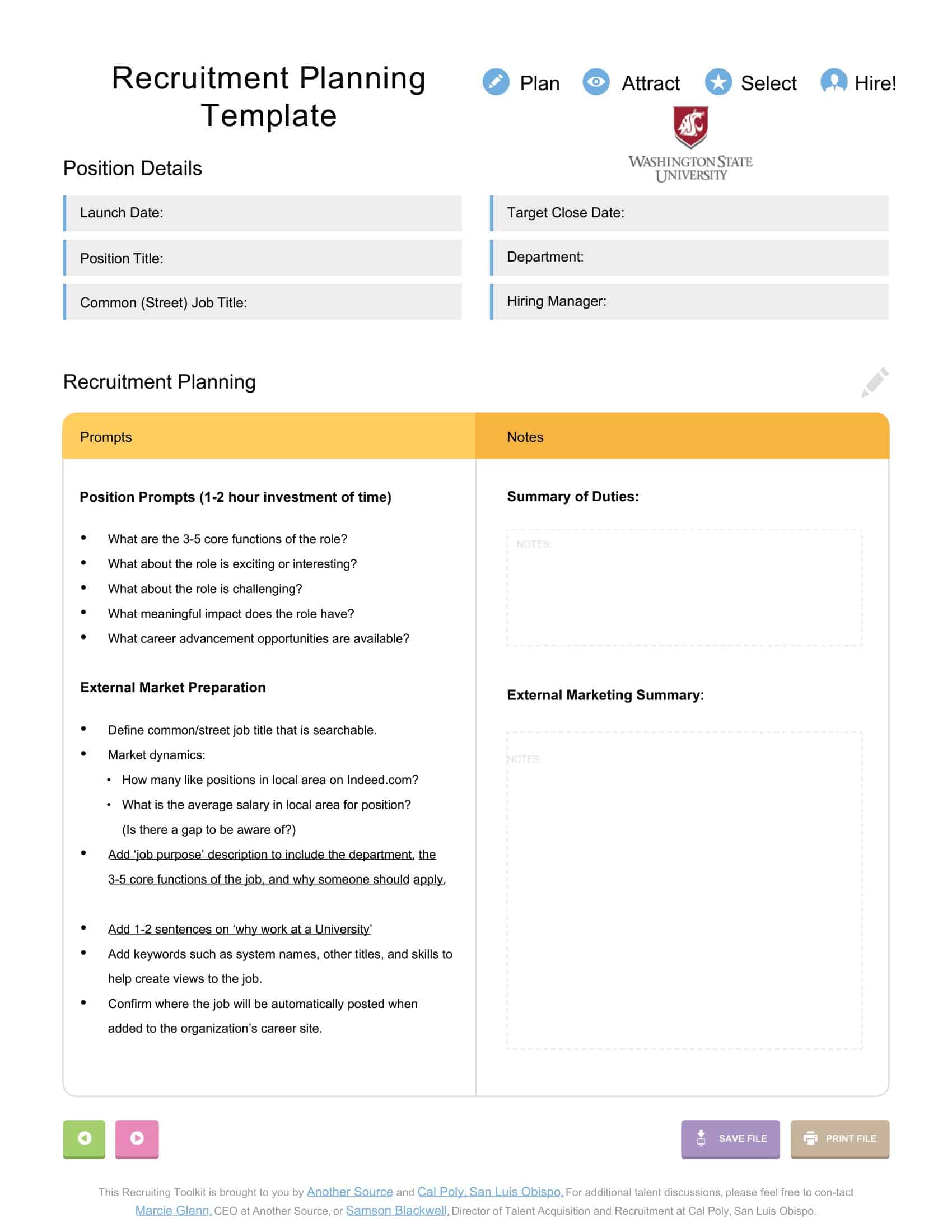























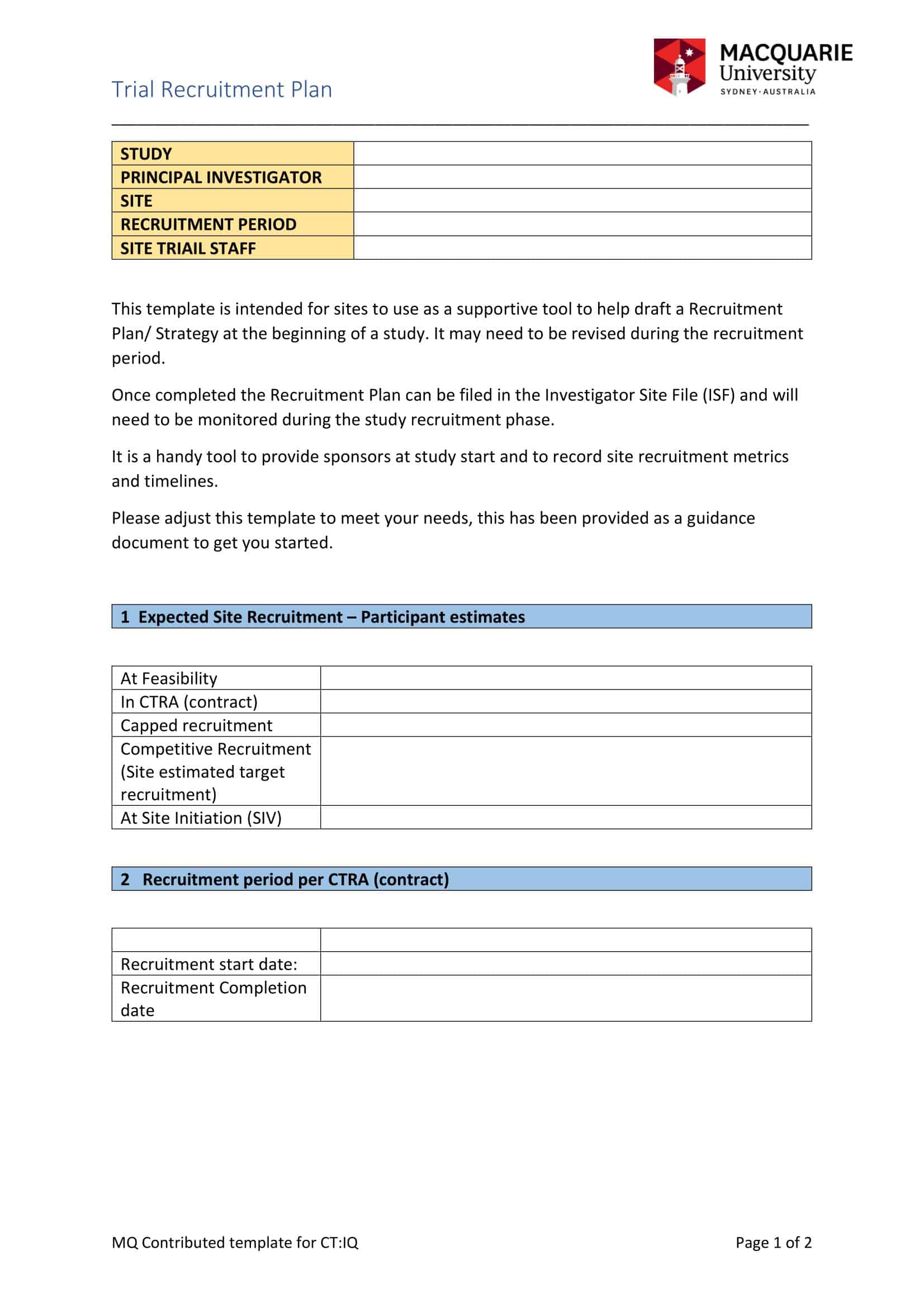
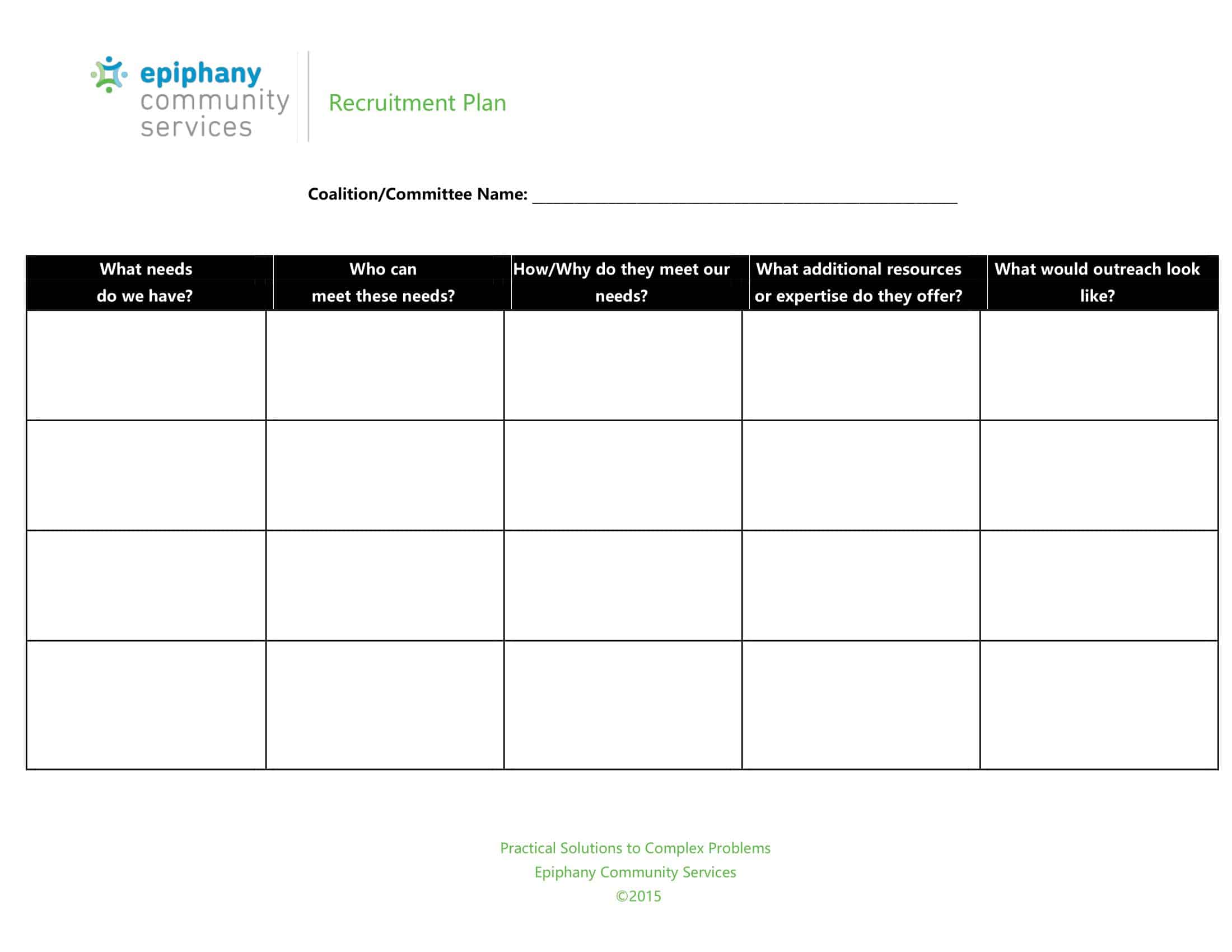
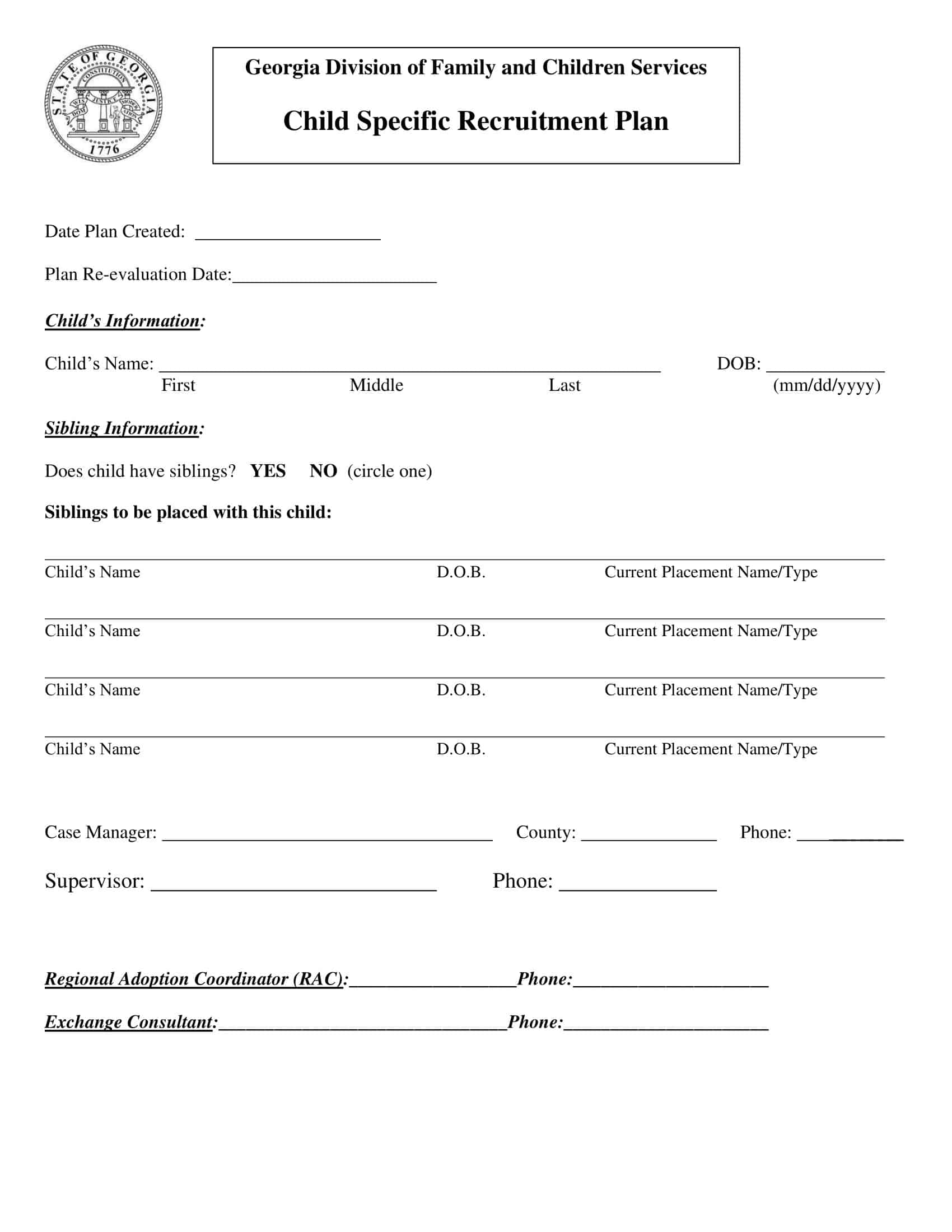



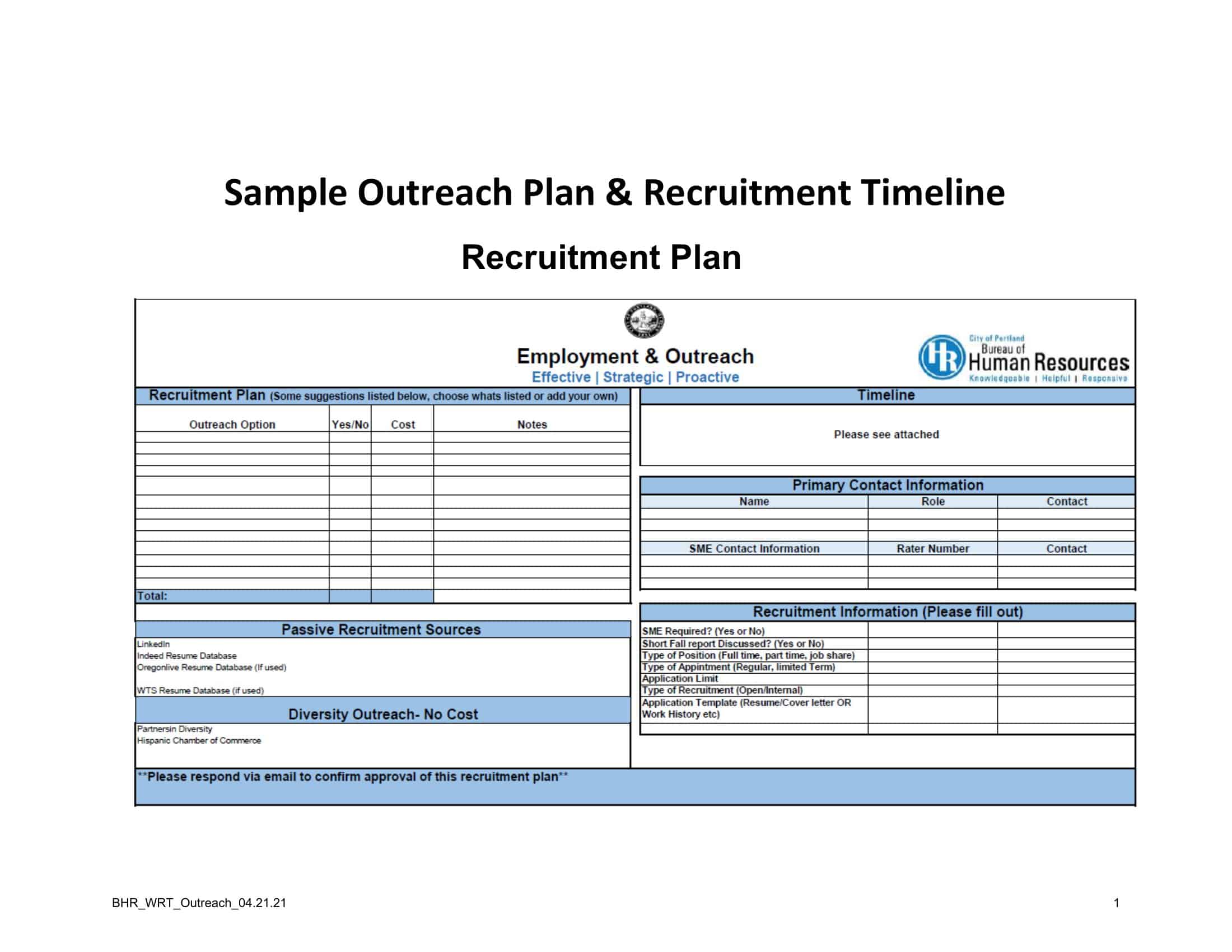


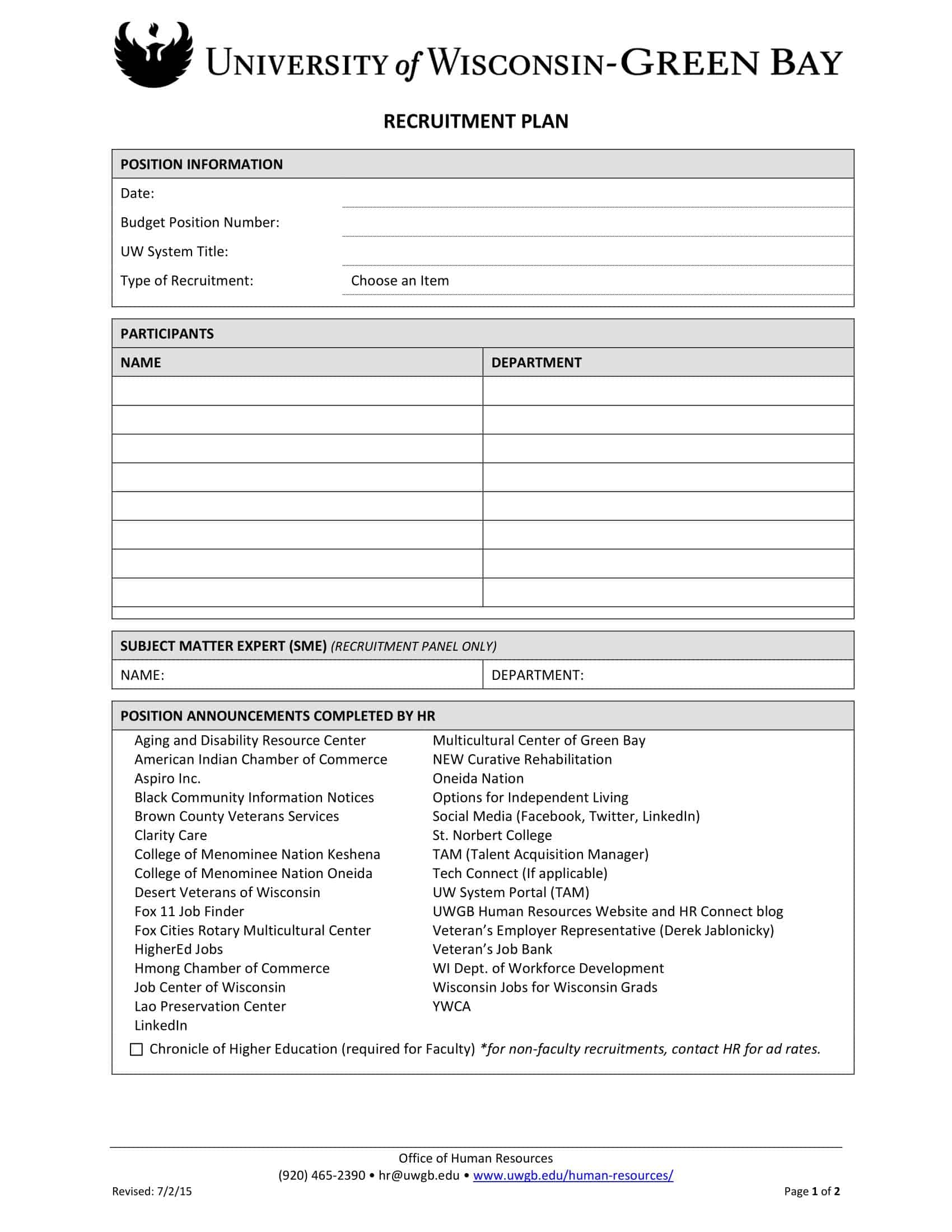
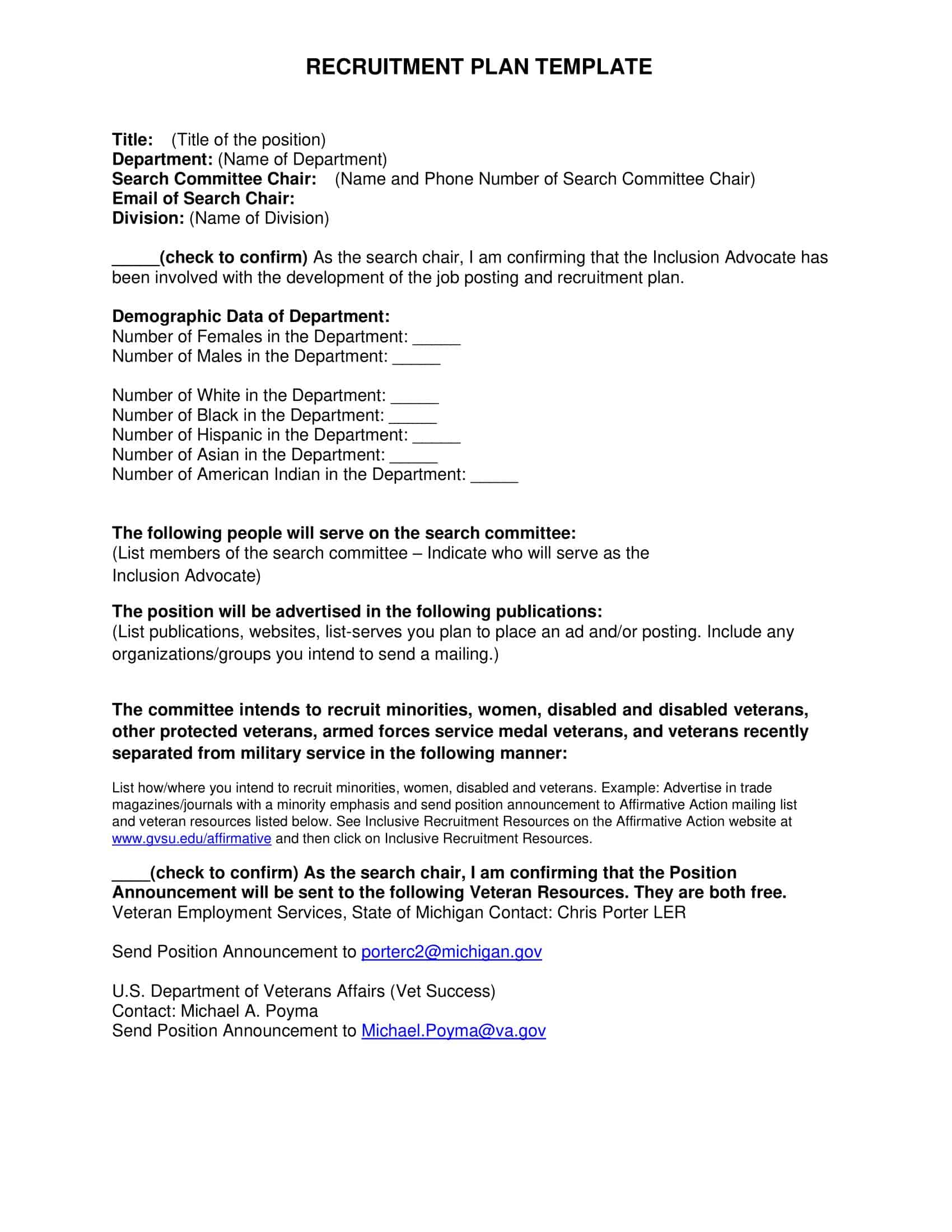



![Free Printable Roommate Agreement Templates [Word, PDF] 1 Roommate Agreement](https://www.typecalendar.com/wp-content/uploads/2023/06/Roommate-Agreement-150x150.jpg)
![Free Printable Credit Card Authorization Form Templates [PDF, Word, Excel] 2 Credit Card Authorization Form](https://www.typecalendar.com/wp-content/uploads/2023/06/Credit-Card-Authorization-Form-150x150.jpg)
![Free Printable Stock Ledger Templates [Excel,PDF, Word] 3 Stock Ledger](https://www.typecalendar.com/wp-content/uploads/2023/08/Stock-Ledger-150x150.jpg)
